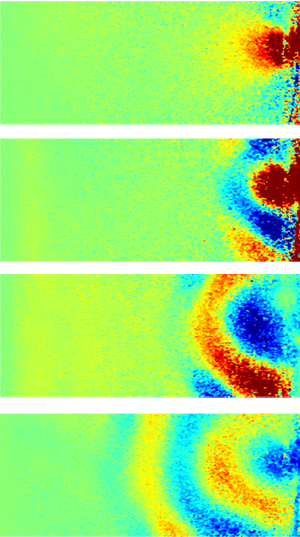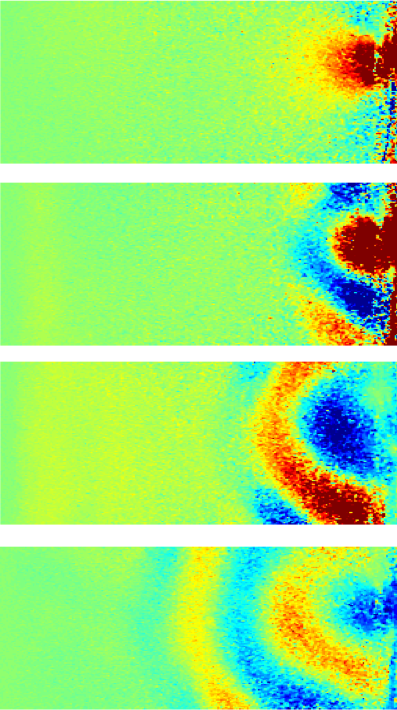New Medical Scan Requires Less Touching
A magnetic field combined with an electric current can jiggle biological tissues and reveal their squishiness, which can indicate the presence of a tumor or some other unhealthy state. In Physical Review Letters, a research team describes their demonstration of this imaging technique, for which they used both a tissue “dummy” and a sample of swine liver. Current techniques for measuring mechanical properties require a device like an ultrasound probe to touch the tissue and vibrate it, so the new system could allow imaging of less accessible samples or organs, such as the brain.
The Lorentz force determines the path of a charged particle as it moves through electric and magnetic fields. Biological cells are rich in charged particles, and medical physicists have exploited the force to measure the electrical conductivity of tissues. Applying a pulsed electric field to a sample immersed in a fixed magnetic field generates a mechanical vibration as the charges respond to the fields. By detecting the resulting compression waves, researchers can produce a kind of sonogram that turns out to provide a map of the conductivity. This image provides different information than one would get from typical medical scans, such as an MRI or CT, which mainly show density.
Changes in physical stiffness, or “elasticity,” provide another measure and can indicate disease, sometimes without accompanying changes in density, says Paul Barbone, a mechanical engineer at Boston University. “Stiff lumps in a breast may or may not show up on x rays or MRIs or ultrasounds, but we can sometimes know they are there because we can feel them.”
One technique to measure such altered stiffness uses lower frequencies that allow so-called shear waves to propagate, in addition to compression waves. In a shear wave, the displacement is perpendicular to the direction of propagation—as when a crowd does “the wave” in a stadium—and the speed indicates stiffness. However, these systems require a device to send vibrations into the tissues, which can be difficult to control or unpleasant for hard-to-reach areas. For example, to scan the brain, the patient has to bite down on a vibrating bar, which Barbone calls the “shake my bones and rattle my brain” technique.
Stefan Catheline and his colleagues at the University of Lyon in France thought that the Lorentz force could generate the vibrations without needing to touch the tissue, as in the technique for measuring conductivity. The team used a 4×8×8 cubic centimeter block of a gelatinous material as a biological tissue mimic. They applied electric and magnetic fields in three different configurations to show that they could generate and detect shear waves. In each case, the magnetic field was steady, and the electric field was a short pulse—a single cycle of a 100-hertz sine wave, applied through a pair of electrodes touching the material. The team detected the vibrations with an ultrasound probe (an MRI could be used in the future) and then created movies of the shear waves, which agreed with their computer simulations.
Running a similar experiment on a cubic sample from a pig’s liver showed that they could produce and detect shear waves in real animal tissue. The team calculated a shear stiffness value that agreed with past measurements of the livers of healthy human subjects.
Team member Pol Grasland-Mongrain cautions that the researchers still haven’t proven that the system will work in inaccessible human tissues. Their next step will be to induce the electric field with a changing magnetic field (separate from the fixed field), rather than with electrodes that touch the tissue, in an attempt to make the system completely remote.
Barbone says that this technique would “see” stiffness in a new way. Or as he likes to joke, “Let’s see how you feel.”
–Kim Krieger
Kim Krieger is a freelance science writer in Norwalk, Connecticut.





